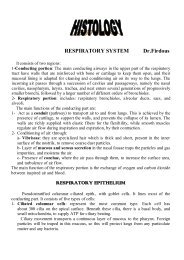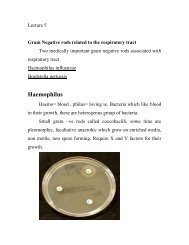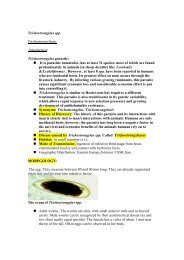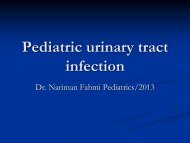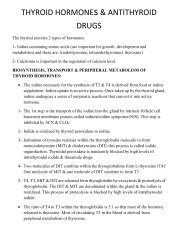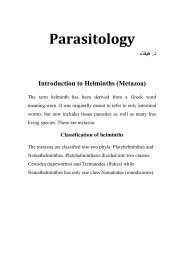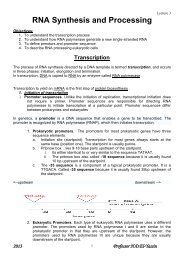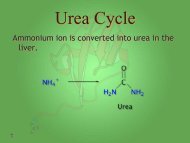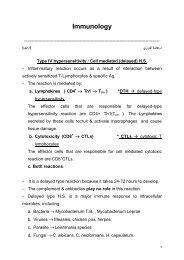HOOKWORMS
HOOKWORMS
HOOKWORMS
You also want an ePaper? Increase the reach of your titles
YUMPU automatically turns print PDFs into web optimized ePapers that Google loves.
. And abdominal distention with ascites . -7-DiagnosisDepend on finding characteristic worm eggs on microscopicexamination of the stools , although this is not possible in earlyinfection .The eggs are oval or elliptical ,measuring about 60 micrometers by40 micrometers ,colorless, not bile stained and with a thintransparent hyaline shell membrane. When released by the worm inthe intestine ,the eggs contains an unsegmented ovum . During itspassage down the intestine , the ovum develops and thus the eggspassed in feces have segmented ovum , usually with 4 to 8blastomeresNote :If the fecal sample is left for a day or more under tropical conditions,the larvae will have hatched out , so eggs might no longer beevident. In such cases ,it is essential to distinguish hookworms fromstrongyloides larvae .Adult worms are rarely seen , but if found,would allow definitive identification of the species .Diffrentiation between hookworm and strongyloides larvae based onthe length of the buccal cavity ,the space between the oral openingand the esophagus in hookworm rhabditiform larvae have longbuccal cavities whears strongyloides rhabditiform larvae haveshort buccal cavities .PreventionThe infective larvae develop and survive in an environment of dampdirt , particularly sandy and loamy soil .They cannot survive in clay or



